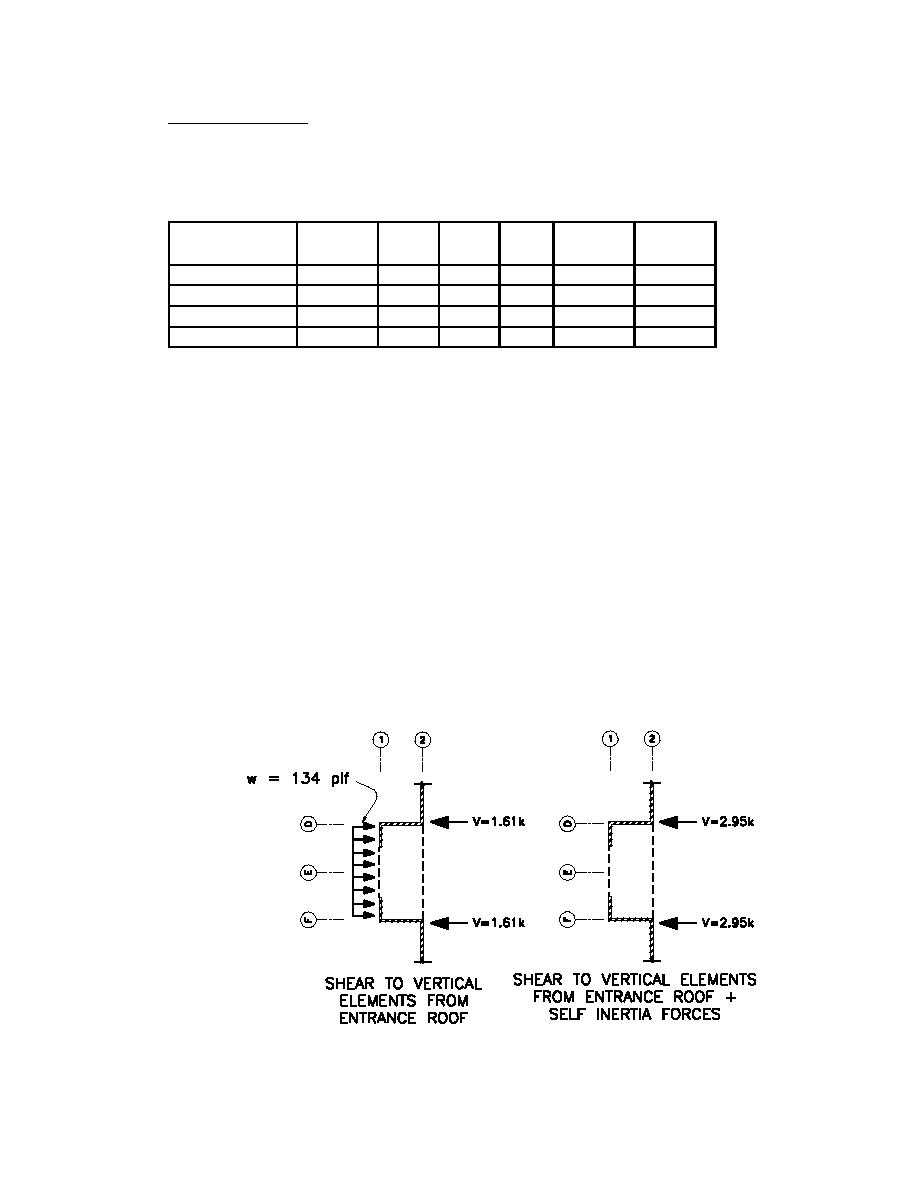
Longitudinal direction: Seismic forces in the longitudinal direction are resisted by shear wall lines D & F
evenly due to symmetry. The diaphragm forces are due to the weight of the roof area and normal wall line
1. The weight of wall line 2 is included in the weight tributary to the upper roof.
LOWER SLOPED ROOF @ ENTRANCE TRIBUTARY SEISMIC WEIGHTS (ROOF AND NORMAL
WALLS)
Item
Tributary
Length /
% Solid
Area
Unit Weight Seismic Weight
Height / Width
Width
(ft.2)
(psf / lb)
(kips)
(ft.)
(ft.)
LOWER ROOF
Roof D1-F2
10.0
24.0
100.0
240.0
13.7
3.3
TRANSVERSE WALLS
Wall D1-F1
---
---
100.0
160.0
100.0
16.0
TOTAL
19.3
Total weight = 19.3 kips
Seismic coefficient, C = 0.167
85.6 KN
Seismic force = CsW = (0.167)(19.3) = 3.22 kips (14.3 KN)
Equivalent Running Load w = 3.22 k / 24 ft. = 134 plf (1.96 KN/m)
-
Shear force to wall line D from entrance roof
V = wL/2 = (134)(12' = 1.61 k (7.16 KN)
)
-
Shear force to wall line F (same as wall line D)
V = 1.61 k (7.16 KN)
The self-weight inertial effects of the shear walls due to the weight tributary to the entrance roof must now
be added to the shears determined for shear wall lines D and F.
-
Weight of wall line D tributary to the entrance roof = 8.0 kips
Self-weight inertial force = CsW = (0.167)(8.0) = 1.34 kips
Total shear to wall line D tributary to entrance roof diaphragm = (1.61k) + (1.34k) = 2.95 k (13.1 KN)
-
Wall line F same as line D
Total shear = 2.95 k (13.1 KN)
1 kip = 4.448 KN
1 plf = 14.59 N/m
H3-27



 Previous Page
Previous Page
